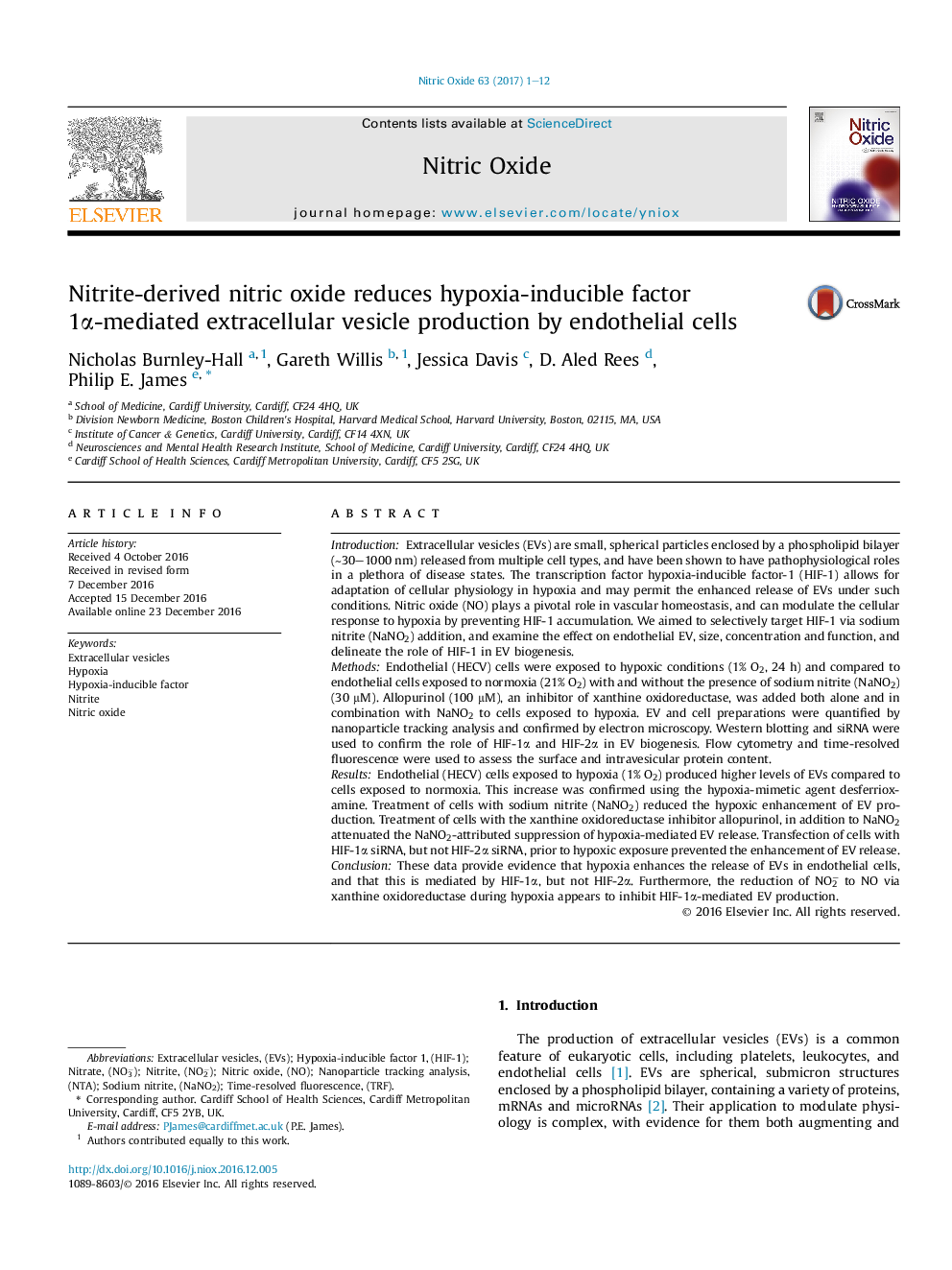| کد مقاله | کد نشریه | سال انتشار | مقاله انگلیسی | نسخه تمام متن |
|---|---|---|---|---|
| 5514258 | 1541597 | 2017 | 12 صفحه PDF | دانلود رایگان |
- Hypoxia-inducible factor 1α, but not 2α, mediates extracellular vesicle release in endothelial cells.
- Nitrite-derived nitric oxide increases HIF-1α degradation, and subsequently reduces extracellular vesicle production.
- This effect is attenuated by inhibition of xanthine oxidoreductase, preventing the conversion of nitrite to nitric oxide.
IntroductionExtracellular vesicles (EVs) are small, spherical particles enclosed by a phospholipid bilayer (â¼30-1000 nm) released from multiple cell types, and have been shown to have pathophysiological roles in a plethora of disease states. The transcription factor hypoxia-inducible factor-1 (HIF-1) allows for adaptation of cellular physiology in hypoxia and may permit the enhanced release of EVs under such conditions. Nitric oxide (NO) plays a pivotal role in vascular homeostasis, and can modulate the cellular response to hypoxia by preventing HIF-1 accumulation. We aimed to selectively target HIF-1 via sodium nitrite (NaNO2) addition, and examine the effect on endothelial EV, size, concentration and function, and delineate the role of HIF-1 in EV biogenesis.MethodsEndothelial (HECV) cells were exposed to hypoxic conditions (1% O2, 24 h) and compared to endothelial cells exposed to normoxia (21% O2) with and without the presence of sodium nitrite (NaNO2) (30 μM). Allopurinol (100 μM), an inhibitor of xanthine oxidoreductase, was added both alone and in combination with NaNO2 to cells exposed to hypoxia. EV and cell preparations were quantified by nanoparticle tracking analysis and confirmed by electron microscopy. Western blotting and siRNA were used to confirm the role of HIF-1α and HIF-2α in EV biogenesis. Flow cytometry and time-resolved fluorescence were used to assess the surface and intravesicular protein content.ResultsEndothelial (HECV) cells exposed to hypoxia (1% O2) produced higher levels of EVs compared to cells exposed to normoxia. This increase was confirmed using the hypoxia-mimetic agent desferrioxamine. Treatment of cells with sodium nitrite (NaNO2) reduced the hypoxic enhancement of EV production. Treatment of cells with the xanthine oxidoreductase inhibitor allopurinol, in addition to NaNO2 attenuated the NaNO2-attributed suppression of hypoxia-mediated EV release. Transfection of cells with HIF-1α siRNA, but not HIF-2α siRNA, prior to hypoxic exposure prevented the enhancement of EV release.ConclusionThese data provide evidence that hypoxia enhances the release of EVs in endothelial cells, and that this is mediated by HIF-1α, but not HIF-2α. Furthermore, the reduction of NO2â to NO via xanthine oxidoreductase during hypoxia appears to inhibit HIF-1α-mediated EV production.
Journal: Nitric Oxide - Volume 63, 28 February 2017, Pages 1-12
